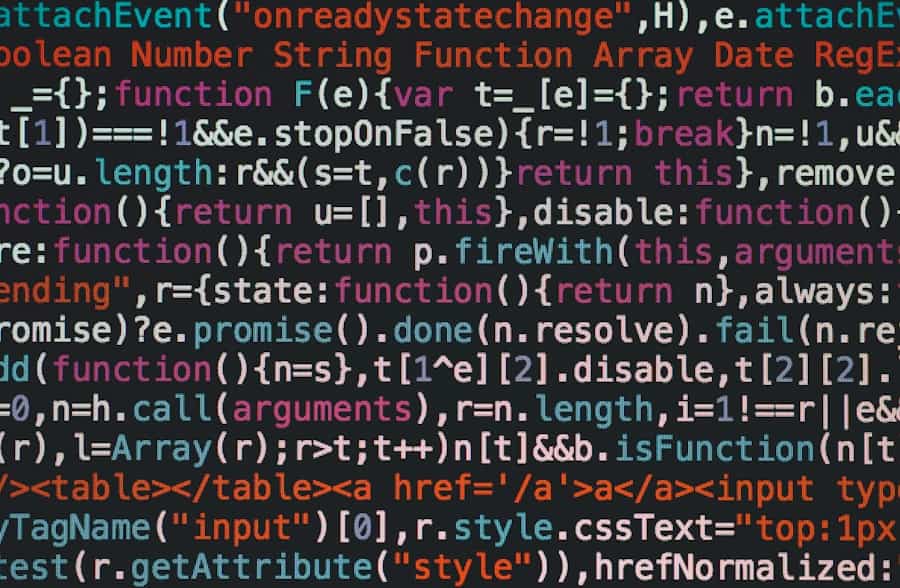Viruses and malware are two terms that are often used interchangeably, but they actually refer to different types of malicious software. A virus is a type of malware that is designed to replicate itself and spread from one computer to another. It can attach itself to files or programs and infect them, causing damage to the system. Malware, on the other hand, is a broader term that encompasses any type of malicious software, including viruses. It can include spyware, adware, ransomware, and other types of harmful programs.
The history of viruses and malware dates back to the early days of computing. The first computer virus, known as the Creeper virus, was created in the early 1970s. It was a self-replicating program that spread through the ARPANET, which was the precursor to the internet. Since then, viruses and malware have become more sophisticated and prevalent. With the rise of the internet and the increasing reliance on computers and digital devices, the threat of viruses and malware has become a major concern for individuals and organizations alike.
Understanding the Different Types of Viruses and Malware
There are several different types of viruses and malware, each with its own characteristics and methods of infection. Some common types of viruses include file infectors, boot sector viruses, and macro viruses. File infectors attach themselves to executable files and spread when those files are executed. Boot sector viruses infect the boot sector of a computer’s hard drive or floppy disk, making it difficult to detect and remove them. Macro viruses infect documents or templates that contain macros, which are small programs that automate tasks in applications like Microsoft Word or Excel.
Malware encompasses a wider range of malicious software beyond just viruses. Spyware is a type of malware that secretly collects information about a user’s activities without their knowledge or consent. Adware is another type of malware that displays unwanted advertisements on a user’s computer or device. Ransomware is a particularly dangerous type of malware that encrypts a user’s files and demands a ransom in exchange for the decryption key.
Common Signs of Virus and Malware Infection
It is important to be aware of the common signs of virus and malware infection so that you can take action to protect your computer and devices. Some common signs include:
1. Slow computer performance: If your computer is running slower than usual, it could be a sign that it is infected with a virus or malware. This is because viruses and malware can consume system resources and slow down your computer’s performance.
2. Pop-up ads: If you are seeing an excessive amount of pop-up ads, especially ones that are unrelated to the websites you are visiting, it could be a sign that your computer is infected with adware.
3. Unusual error messages: If you are receiving error messages that you have never seen before, or if you are experiencing frequent crashes or freezes, it could be a sign of a virus or malware infection.
4. Unexplained changes to files or settings: If you notice that files have been deleted or modified without your knowledge, or if your settings have been changed without your permission, it could be a sign of a virus or malware infection.
The Importance of Protecting Your Computer and Devices
Protecting your computer and devices from viruses and malware is essential for several reasons. First and foremost, viruses and malware can cause significant damage to your system, resulting in data loss, system crashes, and other issues. They can also compromise your personal information, such as passwords, credit card numbers, and other sensitive data.
Not protecting your devices can also put others at risk. For example, if your computer becomes infected with a virus or malware, it can spread to other computers on the same network or to other devices that connect to your computer. This can result in a widespread infection and can cause significant damage to individuals and organizations.
In addition, failing to protect your devices can leave you vulnerable to other types of cyber threats, such as phishing attacks and identity theft. Phishing attacks involve tricking users into revealing their personal information, such as usernames and passwords, by posing as a legitimate entity. Identity theft involves stealing someone’s personal information and using it for fraudulent purposes.
Best Practices for Safe Internet Browsing
One of the best ways to protect yourself from viruses and malware is to practice safe internet browsing habits. Here are some tips to help you stay safe online:
1. Avoid suspicious websites: Be cautious when visiting websites that look suspicious or untrustworthy. These websites may contain malicious code that can infect your computer or steal your personal information.
2. Do not click on unknown links or attachments: Be wary of clicking on links or opening attachments in emails or messages from unknown senders. These links and attachments may contain viruses or malware.
3. Use strong passwords: Use strong, unique passwords for all of your online accounts. A strong password should be at least eight characters long and include a combination of letters, numbers, and special characters.
4. Keep your software up to date: Regularly update your operating system, web browser, and other software to ensure that you have the latest security patches and updates. These updates often include fixes for vulnerabilities that could be exploited by viruses and malware.
Installing Antivirus and Anti-Malware Software

Installing antivirus and anti-malware software is an essential step in protecting your computer and devices from viruses and malware. These software programs are designed to detect, prevent, and remove viruses and malware from your system.
When choosing antivirus and anti-malware software, it is important to consider factors such as the level of protection offered, ease of use, system requirements, and cost. There are many reputable antivirus and anti-malware software providers available, such as Norton, McAfee, and Avast. It is recommended to choose a software program that offers real-time protection, automatic updates, and regular scans.
Tips for Regularly Updating Your Security Software
Regularly updating your security software is crucial for maintaining the highest level of protection against viruses and malware. Updates often include new virus definitions and security patches that help to protect your computer from the latest threats.
To ensure that your security software is always up to date, you can set up automatic updates. Most antivirus and anti-malware software programs have an option to automatically download and install updates. This will ensure that you are always protected against the latest threats without having to manually check for updates.
How to Perform Regular Scans and Cleanups
Performing regular scans and cleanups is another important step in protecting your computer and devices from viruses and malware. Scans can help to detect any viruses or malware that may have infected your system, while cleanups can remove any detected threats.
To perform a scan, open your antivirus or anti-malware software and select the option to run a scan. You can choose between a quick scan, which scans only the most commonly infected areas of your system, or a full scan, which scans your entire system. It is recommended to perform a full scan at least once a week to ensure that your system is thoroughly checked for any threats.
After the scan is complete, your antivirus or anti-malware software will display a report of any threats that were detected. You can then choose to quarantine or delete the threats to remove them from your system.
Dealing with Virus and Malware Infections
If you suspect that your computer or device is infected with a virus or malware, it is important to take immediate action to remove the infection. Here are some steps you can take:
1. Disconnect from the internet: If you suspect that your computer is infected, disconnect it from the internet to prevent the virus or malware from spreading to other devices or networks.
2. Run a scan: Open your antivirus or anti-malware software and run a full scan of your system to detect and remove any threats.
3. Remove the infection: If the scan detects any viruses or malware, follow the instructions provided by your antivirus or anti-malware software to remove the infection.
4. Update your security software: After removing the infection, make sure to update your security software to ensure that you are protected against the latest threats.
Prevention is Key: Maintaining Safe Cyber Hygiene
While it is important to know how to deal with virus and malware infections, prevention is always better than cure. By maintaining safe cyber hygiene practices, you can greatly reduce the risk of infection. Here are some tips for staying safe online:
1. Keep your software up to date: Regularly update your operating system, web browser, and other software to ensure that you have the latest security patches and updates.
2. Use strong passwords: Use strong, unique passwords for all of your online accounts. A strong password should be at least eight characters long and include a combination of letters, numbers, and special characters.
3. Be cautious when downloading files: Only download files from trusted sources and be wary of downloading files from unknown websites or sources.
4. Be cautious when clicking on links: Be careful when clicking on links in emails, messages, or on websites. Hover over the link to see the URL before clicking on it, and avoid clicking on links that look suspicious or untrustworthy.
By following these best practices and taking steps to protect your computer and devices, you can greatly reduce the risk of virus and malware infections. Remember to stay vigilant and always be cautious when browsing the internet or downloading files.
If you’re looking for effective ways to protect your computer from viruses and malware, you may also be interested in learning about the benefits of outsourcing software development for startups. In a recent article by Zoe Squad, they explore why more startups are considering outsourcing their software development needs. Outsourcing can not only help businesses save time and money but also ensure that their software is developed by experienced professionals who prioritize security measures. To read more about this topic, check out the article here.

